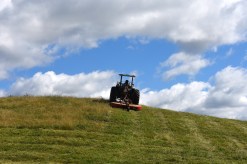How to Identify and Fix a Blocked Drain Before It Gets Worse
Blocked drains can cause significant inconvenience and potential damage if not addressed promptly. Recognizing the early signs of a blocked drain and taking effective repair measures can save you time, money, and stress. This article will guide you through identifying the symptoms of a blocked drain and provide practical steps to fix it before the problem escalates.
Common Signs of a Blocked Drain
The first step in addressing a blocked drain is recognizing when one exists. Common signs include slow draining water in sinks, bathtubs, or showers, unpleasant odors emanating from drains, gurgling sounds when water is draining, and frequent water backups. If you notice standing water around your drainage area or foul smells that persist despite cleaning, these could be indicators of an obstruction within your plumbing system.
Causes of Blocked Drains
Understanding what causes blockages helps prevent future issues. Typical causes include accumulation of hair, grease buildup from cooking oils poured down sinks, foreign objects accidentally flushed or dropped into drains, tree root intrusion in underground pipes, and deteriorating pipes leading to debris collection. Each cause may require different approaches for effective removal.
DIY Methods to Clear Minor Blockages
For minor blockages, there are several do-it-yourself techniques that can be effective. Using a plunger on sinks or toilets can dislodge simple clogs by creating suction pressure. Pouring boiling water down kitchen sink drains helps dissolve grease deposits. Natural solutions like baking soda followed by vinegar can also break down organic material causing blockages. Mechanical tools such as drain snakes or augers allow you to physically remove debris further along the pipe.
When to Call Professional Blocked Drain Repair Services
If DIY methods fail or if you experience repeated blockages despite attempts to clear them yourself, it’s advisable to contact professional blocked drain repair services. Experts have specialized equipment such as high-pressure water jetters and CCTV cameras for accurate diagnosis and thorough cleaning of drainage systems. They also identify underlying structural issues like cracked pipes that DIY fixes cannot resolve safely.
Preventative Measures for Maintaining Clear Drains
Prevention is key in avoiding costly repairs later on. Regularly clean drains by removing visible debris and avoid disposing grease or large food particles down kitchen sinks. Install strainers over drains to catch hair and other solids before they enter pipes. Schedule periodic professional inspections especially if your property has older plumbing infrastructure or is surrounded by trees with invasive roots.
Properly identifying and addressing blocked drains early helps maintain your home’s plumbing health and prevents more severe damage down the line. By understanding common signs, implementing simple repairs when suitable, knowing when professional help is necessary, and adopting preventative habits—your drainage system will stay clear longer ensuring smooth functioning.
This text was generated using a large language model, and select text has been reviewed and moderated for purposes such as readability.





